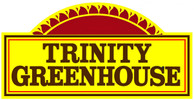Product Overview
Amur cherry
Amur cherry is an ornamental tree native to Manchuria, Siberia, and Korea. It has beautiful amber to reddish-brown flaking bark; clusters of fragrant, white hanging flowers in spring; and red maturing to black fruit.
Botanical name:
All Common Names:
Family (English):
Family (Botanic):
Planting Site:
- Residential and parks,
- Wide median
Tree or Plant Type:
- Tree
Foliage:
- Deciduous (seasonally loses leaves)
Native Locale:
- Non-native
Landscape Uses:
- Massing,
- Shade tree,
- Specimen
Size Range:
- Large tree (more than 40 feet),
- Medium tree (25-40 feet)
Mature Height:
Mature Width:
Light Exposure:
- Full sun (6 hrs direct light daily)
Hardiness Zones:
- Zone 3,
- Zone 4,
- Zone 5 (Chicago),
- Zone 6,
- Zone 7
Soil Preference:
- Moist, well-drained soil
Tolerances:
- Dry sites,
- Alkaline soil
Acid Soils:
- Tolerant
Alkaline Soils:
- Tolerant
Salt Spray:
- Moderately Tolerant
Soil Salt:
- Intolerant
Drought Conditions:
- Tolerant
Poor Drainage:
- Intolerant
Planting Considerations:
- May be difficult to find in nurseries
Ornamental Interest:
- Spring blossoms,
- Showy flowers,
- Attractive bark
Season of Interest:
- Early winter,
- Mid winter,
- Late winter,
- Early spring,
- Mid spring,
- Late spring,
- Mid summer,
- Early fall,
- Mid fall
Flower Color & Fragrance:
- Fragrant,
- White
Shape or Form:
- Pyramidal,
- Round
Growth Rate:
- Moderate,
- Fast
Transplants Well:
- Yes
Wildlife:
- Birds
More Information:
Tree & Plant Care
Does best in cold climates, intolerant of heat and humidity.
Full sun, tolerant of light shade in well-drained soil. Protected site best.
Prefers a cool root environment, mulch with 3 to 4 inches of wood chips to moderate soil temperatures.
Needs pruning to maintain shape
May be difficult to find in a nursery.
Disease, pests, and problems
Prone to borers, cankers, and Japanese beetle.
Native geographic location and habitat
Native to Korea, Manchuria, & Siberia.
Bark color and texture
Attractive reddish-brown to golden-brown, exfoliating bark.
Color can vary with age.
Leaf or needle arrangement, size, shape, and texture
Alternate, simple, deciduous leaves, 2 to 4 inches long, ovate leaf shape with serrate leaf margins.
Medium green leaves turn a yellow fall color.
Flower arrangement, shape, and size
Small, clusters of 2 to 3 inch long white racemes. Flowers are fragrant.
Fruit, cone, nut, and seed descriptions
Red fruit matures to black in August. Loved by birds.







